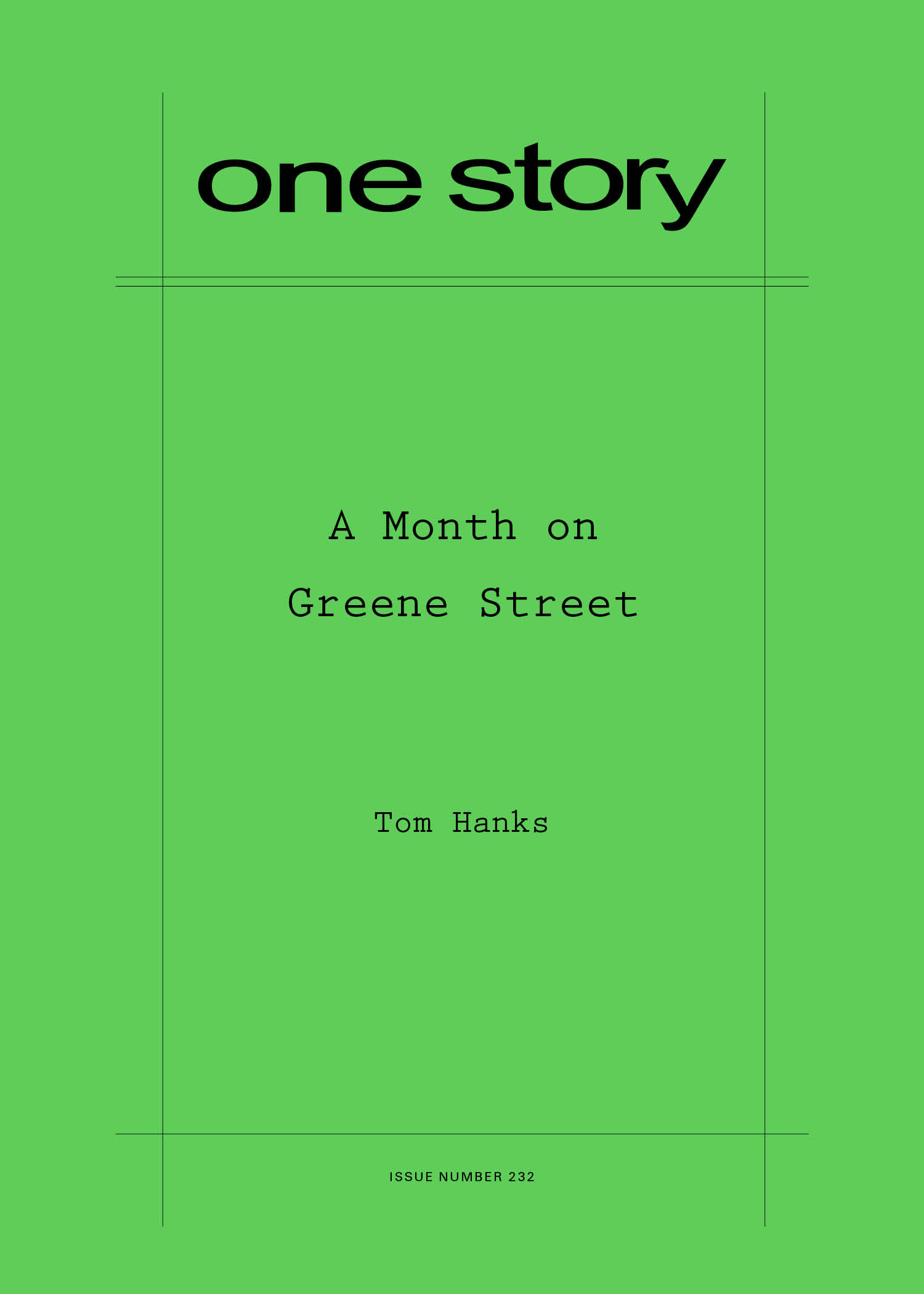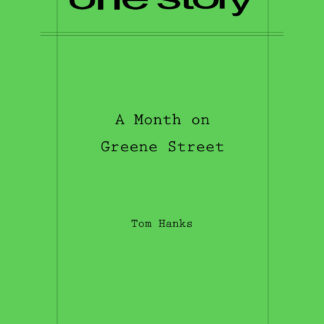
A Month on Greene Street
$2.50
47 in stock
Excerpt
The first of August is usually only so notable—the start of the eighth month in the middle of summer on what might or might not be the hottest day ever. But this year, yowza, a lot was going on that day.
Little Sharri Monk was sure to lose another tooth, a partial lunar eclipse was due around 9:15 p.m., and Bette Monk (mother of Sharri; her older sister, Dale; and her younger brother, Eddie) was moving them all into a three-bedroom house on Greene Street. The home so picturesque she knew she would live there the moment she saw the real estate listing. Bette had a vision—pop—of herself and the kids in the kitchen for a busy breakfast. She was manning the stove-top griddle, turning pancakes, the kids in school clothes finishing their homework and fighting over the last of the orange juice. Her mental image was so focused, so particular, there was no question the house on Greene Street—oh, that massive sycamore tree in the front yard—would be hers. Theirs.
Tom Hanks
Tom Hanks has been an actor, screenwriter, director and, through Playtone, a producer. His writing has appeared in The New York Times, Vanity Fair, and The New Yorker. Uncommon Type is his first collection of fiction.
Patrick Ryan on “A Month on Greene Street”
I’ve long been guilty of inaccurate first impressions. Thankfully, I usually keep them to myself—just private little assessments I make of, say, a person I see across a room. Observations I deem both intuitive and astute. What an accurate judge of character I am! I can sum you up with a glance or, at the very most, a few seconds of watching your mannerisms, your facial expressions. That’s how sharp my receptors are.
Only, they aren’t that sharp. Sometimes I’m near the mark; quite often I’m way off. “Always trust your first impression” is advice we’ve all heard before, and it’s often true—but it slams up against “Don’t judge a book by its cover,” “Don’t knock it till you try it,” and even “Proof’s in the pudding.”
Our new issue is a story called “A Month on Greene Street,” and it’s about a woman named Bette who has just moved her family into a new house. Not only does Bette rely heavily on first impressions, she also takes great stock in what she considers to be her extrasensory visions, or “pops” (as she calls them). “Pops” are little glimpses of the future Bette has now and then. Sometimes they come true; sometimes they don’t. They’re a source of comfort; they’re a source of worry. And there are quite a few of them to be had in a new home, on a new street, surrounded by new neighbors.
This story won me over the first time I read it, and upon each subsequent reading it becomes more layered, more moving, and funnier. It’s written by an author we already know to be a tremendously accomplished actor, and the fact that he’s now proving himself to be a tremendously talented writer of short stories makes me wonder what else he can do. (Levitate? Bend things with his mind?) One Story is thrilled to be giving the world its first glimpse of “A Month on Greene Street” by Tom Hanks. Be sure to check out our Q&A with the author, wherein he discusses Bette, her pops, why and how he came to write short stories, and his fondness for the good old-fashioned typewriter.
Q&A by Patrick Ryan
- PR: Where did the idea for this story come from?
- TH: There is great potential when one moves into a new house: for adventures and friendships, for a new perspective of your town and even of the night sky. But you could also find that you now live on a block with a nut living right next door, some jerk who you will have to negotiate around until one of you moves. My family was always changing living places so we had many adventures. To me, the moves were always exciting new beginnings. The story is my attempt to capture that sense of starting all over. There are new possibilities and new perspectives to be found on new Greene Street.
- PR: You do so many things in this story that I admire. For example, you’re able to successfully juggle a large cast of characters with ease, and you use dialogue not only sparingly but to great effect—every bit of it advances character. What impressed me most, though, was the point-of-view. The narrative is very snugly tethered to Bette Monk, and the result is a very intimate story that’s written in the third-person. Did you ever consider writing this one in the first-person? How different might that have been?
- TH: The collection of stories has, I think, seven that are written in the first-person, and I didn’t want to overuse that technique. Bette Monk had to be a single mom with three kids, close friends, and an ex-husband—a woman with her marital struggles not just behind her, but conquered, in fact. She needed to be moving onto Greene Street by choice, blessed by real-estate luck, into a home that is not hers by default, but by proclamation. She is declaring her future by sinking her savings into this house. The possibility that she could have made a mistake, that Greene Street would saddle her with a permanently disconcerting neighbor, would have been, well, just terrible, no?
- PR: Speaking of which, “A Month on Greene Street” plays with the adage “don’t judge a book by its cover,” because Bette, for most of the story, sticks with her first impression of (and assumption about) her neighbor Paul Legaris. Then one thing—a keychain—changes her impression of him completely. In this respect, would you say the story is about Bette’s learning curve when it comes to strangers? Or is it more a story about Bette’s coming back into the world, post-divorce?
- TH: Her divorce is long behind her—a different life she lived long ago, like her years in college. The story is about assumptions. We all make them about people, steered by everything from media stories, appearances, gossip, fashion (flip-flops on a grown man!) and the instincts we have, like Bette’s extrasensory pops. She is pretty open upon meeting her neighbors—her judgment held close to her vest. But when her line of perception is crossed—by as simple a question as are you doing anything tonight—she leaps at an assumption based on her own experiences, her intuitions, her own notions of the State of Men Right Now. She’s tough that way, but she has every right to be so.
- PR: How did you come to write short stories? Does the form naturally appeal to you? Is it a good fit for your creative rhythm?
- TH: In the office, where we supposedly make movies and television shows, our story ideas are batted around for a long time, trying to be fleshed out into the form that would best examine the theme. Some stories are far too detailed and complex to be movies with the three-act structure. Others would run out of gas in the long arc of a TV series. Some stories have to be documentaries. Some of the stories in this collection have been poking around in my noggin for years, and the experiences I’ve had at the office helped me see that they should take shape as short prose. In a few dozen pages, I could focus on the details that I feel are illuminating—like Bette Monk’s espresso maker and the Patel family—in just a few beats. Also, the time jumps end up carrying more expository weight so I can cut to the chase, such as when the end of August suddenly hits Greene Street and weeks have gone by.
- PR: Can you tell us a little about your interest in/obsession with typewriters? They appear in almost every story in Uncommon Type. I began to look forward to them—like cameos.
- TH: Easter eggs, those machines—and there is one in each story. You may have to look around some of the hedges. My penmanship is atrocious and always has been. I hated it when I was in fifth grade. Typewriters are built to do one thing very simply, repetitively, on demand and (mostly) with no need for electricity. Typewriters cannot be hacked and never lose your document, unless you rip it out of the carriage and tear it up. And, typewriters can do that forever. You tell me what $50 purchase will work as designed for 100 years, other than a cast iron skillet! No one ever throws away a typewritten letter. Each is an individual work of linguistic and literary art, as delicate—and permanent—as a painting in oil on canvas. With a typewriter, one can create a story, a letter, a To Do list, a receipt, some thoughts, and semi-coherent rambles that can last as long as Sumerian clay tablets. I find such permanence to be a wonder.
- PR: Do you have more short stories in the works?
- TH: In my head, dammit. God gave us all burdens, and some of us typewriters.
- PR: What is the best bit of advice about writing you have ever received?
- TH: Don’t quit for the day until you know what happens next. That, and have a new ribbon handy.
